Rectifier Diode: Revolutionizing Electrical Applications with Advanced Semiconductor Technology
This article explores the latest advancements, practical applications, and ongoing challenges in the field of rectifier diodes, offering a valuable resource for engineers seeking to elevate their knowledge and practical skills.
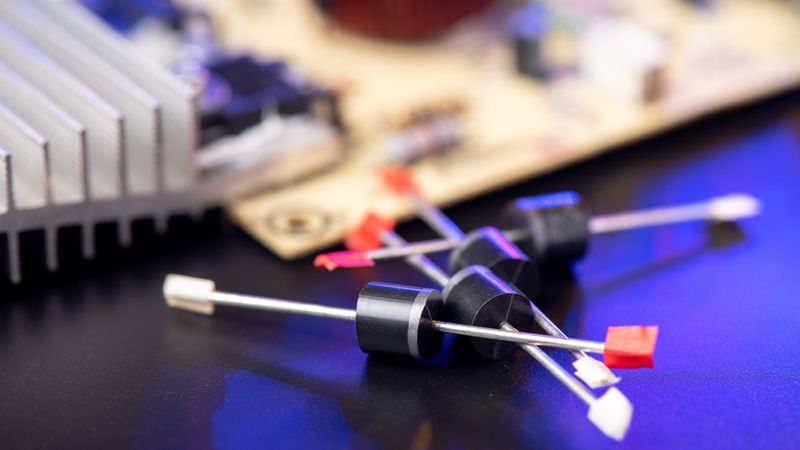
Diode, electronic component that conducts current in one direction
Introduction
Rectifier diode stands as a fundamental building block in the vast domain of electronics, enabling the conversion of alternating current (AC) to direct current (DC). This conversion powers everything from our household appliances to computing devices, ensuring their reliability and efficiency.
Rectifier diodes utilize semiconductor properties to allow current to flow in only one direction, effectively filtering out any reversals typical of AC input. This directional control of electrical flow is foundational to modern electronics, enabling technologies to function with the precise electrical input they require.
Advancements in semiconductor technology have continuously refined the rectifier diode, yielding improved efficiency, higher current handling capabilities, and minimized forward voltage drops. These advancements have fueled the miniaturization and diversification of rectifiers, making the rectifier diode, a vital component in power supplies, DC motors, and a wide array of electronic devices. Let’s start with the basics of rectifier diode!
What are Diodes and Rectifiers?
Electronics rely on two key components: diodes and rectifiers. Diodes, acting as tiny one-way streets for electricity, allow current to flow in a single direction. This fundamental property fuels a vast array of applications. Rectifiers, often built using diodes, take this a step further by converting alternating current (AC), which constantly flips direction, into direct current (DC), the kind used by most electronic devices. These building blocks are fundamental to everything from powering our phones to enabling efficient energy conversion. Let’s get into these further!
Diodes
Diodes are semiconductor devices that primarily function as one-way switches for electric current. They allow current to flow in one direction while blocking it in the opposite direction. This directional property, known as rectification, is crucial for converting alternating current (AC) to direct current (DC), among other applications.
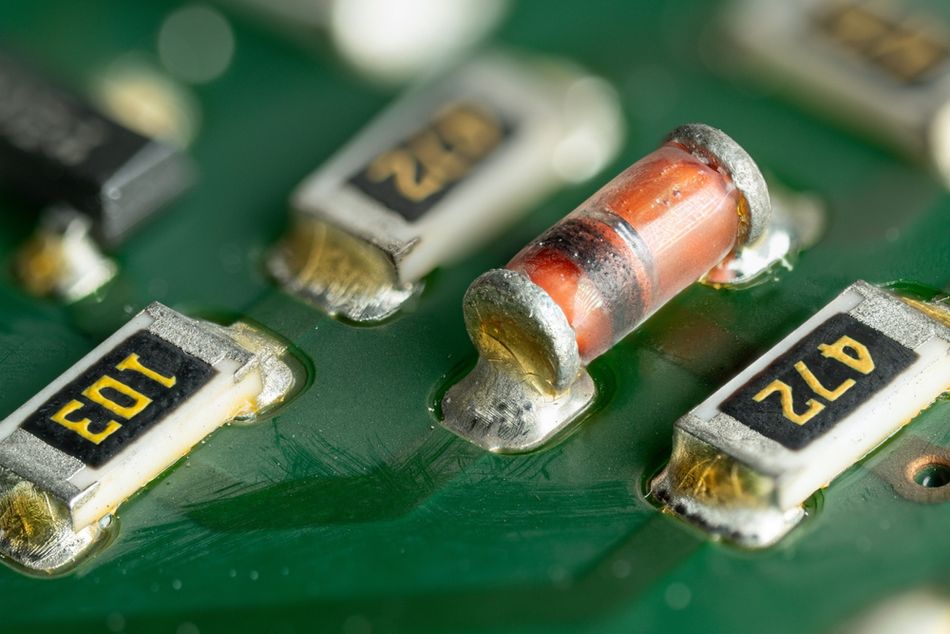
A diode is typically made from a semiconductor material, commonly silicon, which is doped with impurities to create a PN junction. This junction consists of a P-type material, which has excess positive charges (holes), and an N-type material, which has excess negative charges (electrons). [1]
When voltage is applied across a diode in a direction that aligns with the PN junction (forward bias), it lowers the barrier at the junction, allowing current to flow. When voltage is applied in the opposite direction (reverse bias), it increases the barrier, effectively preventing current flow, except for a very tiny leakage current.
Diodes have a wide range of applications including power conversion, signal demodulation, voltage regulation, and protection circuits. They are fundamental components in many electronic circuits, serving critical functions in both power management and signal processing.
Rectifiers
Rectifiers are electrical devices specifically designed to convert alternating current (AC) into direct current (DC). They achieve this by utilizing components like diodes, which act as one-way routes for electricity. When AC voltage passes through a rectifier, only the portion flowing in the forward direction allowed by the diodes is permitted to pass. This results in a pulsating DC output, with the specific waveform depending on the rectifier circuit design. Rectifiers are often used in single-phase AC to DC-conversion applications.
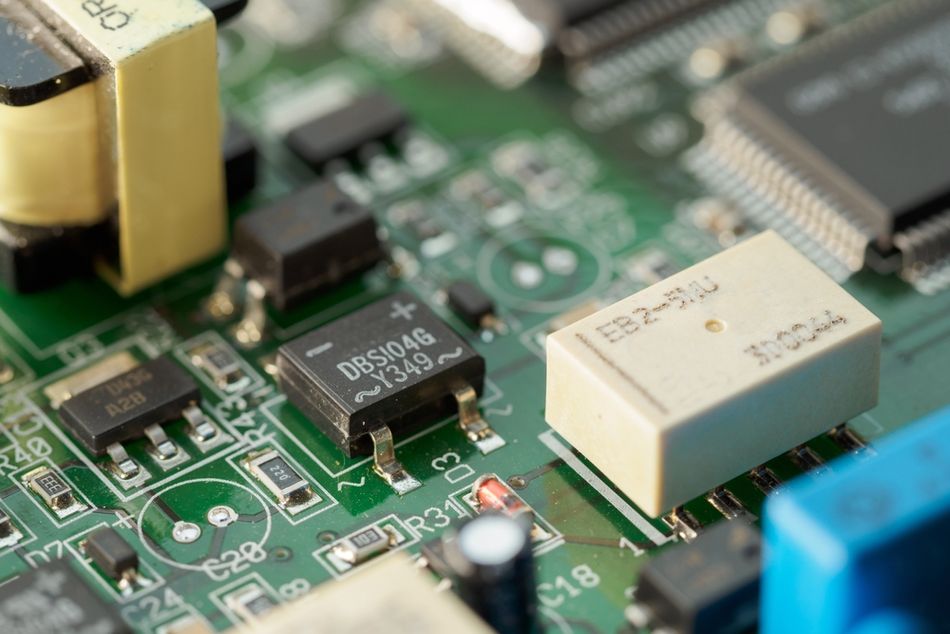
There are various rectifier configurations, each employing one or more diodes in specific circuit arrangements. The types of rectifiers are:
Half-Wave Rectifier:
A half-wave rectifier is the simplest form of rectifier circuit, employing a single diode to convert alternating current (AC) into a pulsating direct current (DC) output. [2]
These rectifiers are used in applications where a simple DC voltage with lower current requirements is sufficient, such as LED biasing circuits, and battery chargers for low-power devices. However, for applications demanding higher efficiency, smoother DC output, or higher power levels, full-wave rectification becomes a more suitable choice.
Full-Wave Rectifier:
A full-wave rectifier offers a more efficient and smoother approach to converting alternating current (AC) into direct current (DC). It utilizes a configuration of diodes to capture both positive half-cycles and negative half-cycles of the AC waveform. This results in a rectified DC output with significantly less ripple.
There are two primary types of full-wave rectifier circuits:
Diode Bridge Rectifier: Uses four diodes arranged in a bridge configuration to allow both halves of the AC input to be used
Center-Tapped Rectifier: Uses two diodes and a center-tapped transformer, dividing the secondary winding of the transformer into two equal voltages which are then rectified by the two diodes.

Bridge rectifier circuits are the preferred choice for most applications requiring DC power due to their efficiency and superior output characteristics. Diode rectifiers are vital components in power supplies, battery chargers, DC motors, and various electronic devices that rely on a smooth and reliable DC voltage.
Recommended Reading: N-Type Vs P-Type: Difference Between P-Type and N-Type Semiconductors
Exploring the Fundamentals: Rectifier Diode
Rectifier Diodes
Rectifier diodes are a specific type of semiconductor diode designed for manipulating current flow. Unlike a regular wire, it acts as a one-way street for electricity. Constructed from semiconductors, it allows current to flow freely in the forward direction (anode positive, cathode negative) but restricts it in the reverse. Rectifier diodes pave the way for powering countless electronic devices by transforming readily available AC power into the essential DC they require.
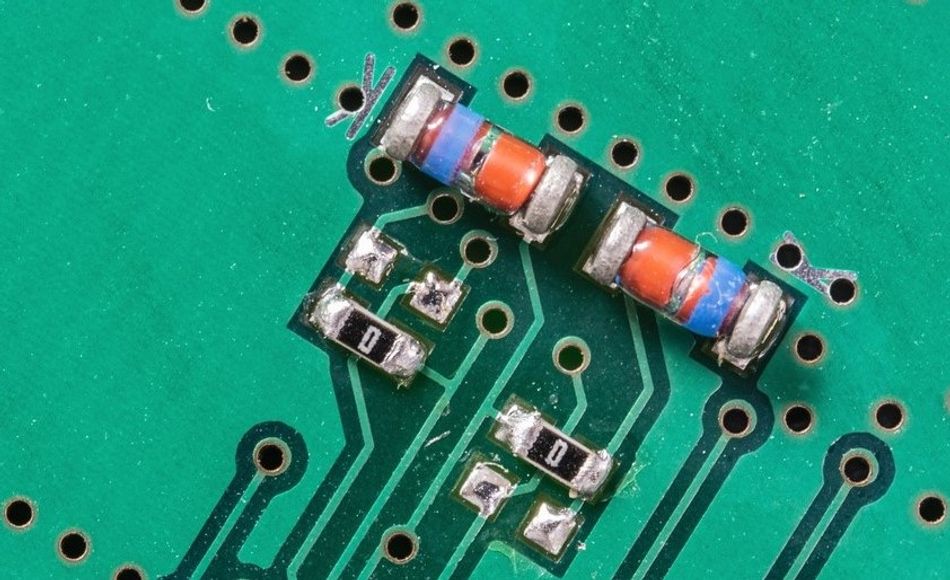
Like all diodes, rectifier diodes allow current to flow in one direction only, which is fundamental for the conversion of AC to DC. These diodes are built to withstand higher current and voltage levels compared to general-purpose diodes. This capability makes them suitable for heavy-duty applications in power supplies. Rectifier diodes exhibit a relatively low forward voltage drop when conducting, which enhances their efficiency by minimizing energy loss during the conversion process.
Rectifier diodes hold immense significance in various electronic applications. They are used alongside components, including resistors, capacitors, and adapters. Their core function lies in converting alternating current (AC) into direct current (DC). This rectified DC serves as the lifeblood of numerous devices. Power supplies rely on rectifier diodes to transform AC mains power into a usable DC voltage for powering electronic circuits. IGBTs, and TVS, are often used in used in power conversion applications alongside rectifier diodes.
Battery chargers utilize them to rectify AC and provide the essential DC for charging batteries. DC motors leverage rectifier diodes to convert DC into a pulsating DC format, driving motor operation. Even in signal processing, rectifier diodes play a role by rectifying AC signals for further manipulation within electronic circuits. The versatility of rectifier diodes makes them cornerstone components in the realm of electronics.
Types of Rectifier Diodes
Rectifier diodes can be categorized into several types based on their operational characteristics and applications, each offering unique benefits suited for specific electronic functions:
Standard Diodes: Typically used in general-purpose applications for straightforward rectification of alternating currents. Their simple, robust structure makes them cost-effective and reliable, suitable for low-frequency environments such as consumer electronic chargers and basic power supply units.
Fast Recovery Diodes: Designed for applications that require rapid switching capabilities, these diodes significantly minimize the time needed to switch from conducting to non-conducting states. This feature is critical in high-frequency and digital electronic circuits, including modulation systems and converters in telecommunications. [3]
Schottky Diodes: Characterized by their low voltage drop and high-speed switching, these diodes are constructed with a metal-semiconductor junction, which allows for quicker response times compared to standard silicon diodes. Schottky diodes are extensively used in high-efficiency power applications, such as in solar inverters and automotive voltage regulators.
Zener Diodes: These are primarily used for voltage regulation, allowing current to flow in reverse when a specified voltage is exceeded, thus protecting circuits from overvoltage conditions. Zener diodes are indispensable in providing stable reference voltages for sensitive electronic components.
Let’s compare their key characteristics and typical applications:
| Type | Key Characteristics | Typical Applications |
| Standard Diodes | Low Switching Speed, High Durability | Consumer Electronics, Power Supplies |
| Fast Recovery Diodes | High Switching Speed, Low Recovery Time | RF Systems, Digital Circuits |
| Schottky Diodes | Low Forward Voltage, High-Speed Switching | Power Converters, Solar Inverters |
| Zener Diodes | Voltage Regulation, Reverse-Bias Operation | Voltage Stabilizers, Circuit Protection |
The performance and efficiency of these diodes are heavily influenced by their internal structure and material properties.
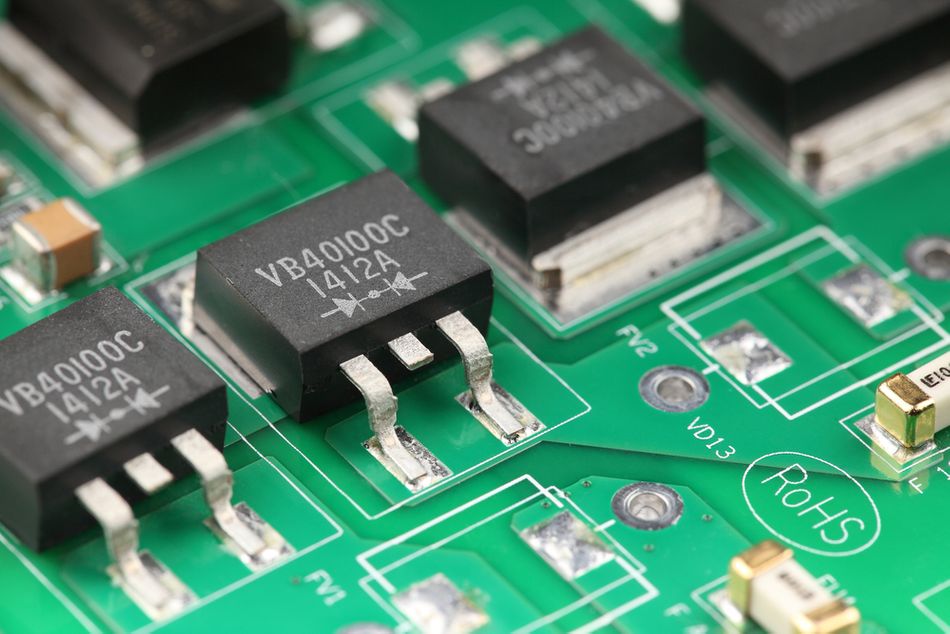
For example, Schottky diodes, with their unique metal-semiconductor barrier, allow for less thermal stress and more efficient operation under high-frequency conditions. This precision engineering supports innovations across both industrial and consumer electronics, enhancing the capabilities and reliability of electronic systems. These diodes can be susceptible to damage from electrostatic discharge. Proper handling practices are essential to avoid ESD damage.
Choosing Rectifier Diodes
Choosing the appropriate rectifier diode is vital for ensuring efficient and reliable operation in your AC-to-DC conversion application. Here are some key factors to consider when selecting a rectifier diode:
Peak Reverse Voltage (PRV): The maximum voltage the diode can withstand in reverse bias before breakdown.
Maximum Forward Current (If): The maximum value of the forward current that the diode can carry without damaging the device.
Peak Surge Current: The maximum current surge that a diode can handle for a short period of time.
Maximum Voltage Drop (VD): The voltage that stays in the diode when it is forward-biased. Commonly, it will be 0.7V for diodes made of silicon.
Package and Form Factor: The physical size and package type of the diode might be relevant depending on space constraints in your circuit design. Common package types include DO-41 (axial) and TO-220 (through-hole) for larger currents, and SMD (surface-mount) for compact designs. [4]
By carefully evaluating these factors, and datasheet of components alongside your specific application requirements, users can select the optimum rectifier diode for their projects.
Recommended Reading: Zener Diode: A Comprehensive Guide to Its Principles and Applications
Basics of Semiconductor Function
Semiconductor materials, particularly silicon, are central to the functionality of electronic devices, bridging the gap between conductors and insulators. Their ability to conduct electricity under specific conditions is utilized in rectifier diodes through a process called doping. Doping involves introducing impurities into the semiconductor to alter its electrical properties, creating regions within the material, rich in either positive charge carriers or negative charge carriers.
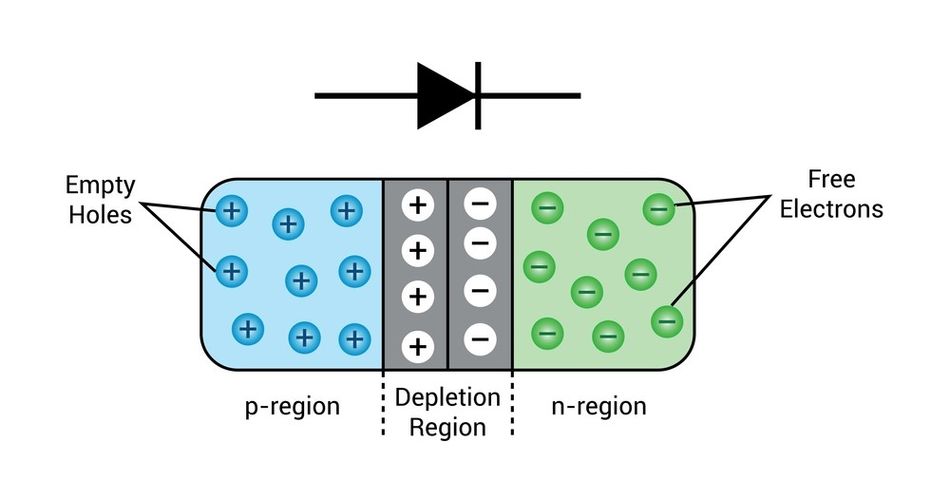
P-N junction is the core of rectifier diodes, formed where these doped regions meet. This junction is crucial because it dictates the flow of electricity. Under forward bias—when a positive voltage is applied to the p-type side relative to the n-type—both electrons and holes are drawn towards the junction, allowing current to flow. Conversely, under reverse bias, this flow is blocked, and only a minimal leakage current is possible. This one-way flow of current is fundamental to the diode’s ability to convert AC to DC power.
Doping not only determines the type of charge carriers present but also enhances the semiconductor's conductivity by increasing the density of these carriers. This modification is vital for optimizing the P-N junction diode’s efficiency. By understanding the dynamics of charge carriers, including their movements and interactions at the junction, engineers can design diodes that better meet the needs of modern electronics, supporting everything from power management to signal processing.
Recommended Reading: Forward Bias, Reverse Bias and Their Effects on Diodes
Latest Advancements in Rectifier Diode Technology
Enhanced Efficiency and Power Handling
Recent advancements in rectifier diode technology have significantly boosted their efficiency and power handling capabilities. These enhancements are critical for the performance of electronic devices, driven by both innovative design modifications and the introduction of new semiconductor materials. The collective impact of these changes has set new performance standards for diodes, particularly in high-power applications.
Increased Power Density: Modern diodes can handle higher power levels within smaller footprints. This is crucial in portable electronic devices where space is at a premium, enabling more powerful applications without increasing device size.
Reduced Heat Generation: Due to advancements in diode design, heat production during operation has been minimized. This reduction in heat generation extends the lifespan of electronic devices and reduces the need for complex cooling systems, making devices more durable and energy-efficient.
Improved Switching Speed: The use of materials with higher electron mobility has led to faster switching speeds. This reduction in energy loss during state changes is particularly beneficial in applications requiring high-frequency switching, such as in telecommunications and automotive electronics.
Two materials, in particular, have revolutionized diode performance:
Silicon Carbide (SiC): SiC stands out for its high thermal conductivity and electrical breakdown resistance, allowing diodes to operate at higher voltages and temperatures. These properties make SiC ideal for high-power applications like electric vehicles and industrial power systems, where efficiency and durability are paramount.
Gallium Nitride (GaN): GaN features a high electron mobility that facilitates faster switching and lower power loss. Its efficiency is particularly valuable in high-frequency applications, including RF and microwave communications, where reducing power loss is critical for maintaining signal integrity and system performance.
The integration of SiC and GaN into diode manufacturing not only enhances the intrinsic properties of rectifier diodes but also contributes to the development of more energy-efficient electronic systems. These materials are pushing the boundaries of what's possible in power electronics, enabling further advancements in technology while improving cost-effectiveness.
Miniaturization and Integration
Advancements in materials science have played a pivotal role in the miniaturization of rectifier diodes. These latest developments have been crucial in meeting the demands for smaller, more efficient, and more integrated electronic circuits (ICS). The development of ultra-compact, high-efficiency materials has enabled diodes to be embedded in microchips used in smartphones and wearable technology, where space is at a premium.

The integration of rectifier diodes with other semiconductor devices has revolutionized compact electronic designs. This synergy allows for enhanced functionality within smaller packages, essential in devices like modern medical implants and advanced automotive sensors. In these applications, efficiency, and size directly impact performance and user experience.
Nanotechnology has been instrumental in pushing the boundaries of miniaturization further. Techniques such as atomic layer deposition and electron beam lithography have enabled the precise manipulation of materials at the nanoscale. [5] This leads to diodes that are not only compact but also perform better in terms of speed and energy efficiency. While these methods present challenges, including complex manufacturing processes and higher production costs, the benefits are substantial. They include significant reductions in energy consumption and heat generation, critical for the longevity and reliability of integrated circuits in high-performance computing environments.
The ongoing trend towards miniaturization and integration, driven by materials science and nanotechnology, continues to reshape the landscape of electronic design. It opens new possibilities for technological advancement and application in fields ranging from telecommunications to healthcare.
Practical Challenges and Considerations
Enhanced Efficiency and Power Handling
Recent advancements in rectifier diode technology have led to significant improvements in both efficiency and power handling capabilities. These are crucial for the reliability and performance of modern electronic devices. These enhancements, stemming from both architectural innovations and breakthroughs in material science, set new benchmarks for diode functionality.
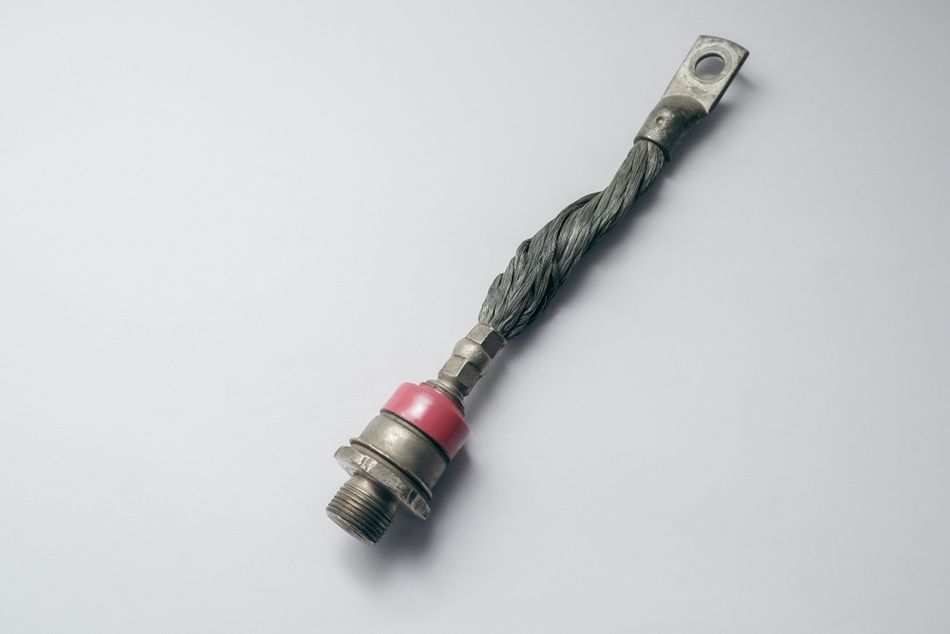
The introduction of materials like Silicon Carbide (SiC) and Gallium Nitride (GaN) has been instrumental in these advancements. SiC diodes are particularly valued for their superior high-temperature and high-voltage performance compared to standard silicon diodes, making them ideal for high-power applications such as automotive or industrial power systems. The high bandgap of SiC allows it to maintain operational stability under extreme conditions, thus significantly reducing failure rates and improving device longevity.
GaN diodes stand out for their efficiency and faster switching capabilities, which are essential for high-frequency applications like RF and microwave communications. The high electron mobility in GaN translates to lower energy losses and superior performance in environments where rapid switching is required. This makes GaN diodes particularly effective in advanced telecommunications infrastructure and satellite communications, where their impact on reducing latency and boosting signal integrity can be profound.
By integrating SiC and GaN into diode manufacturing, engineers have been able to develop smaller, faster, and more reliable diodes. These materials directly contribute to enhanced thermal conductivity and electrical efficiency, pushing the boundaries of what's possible in power electronics and enabling further advancements in technology while improving cost-effectiveness. The ongoing trend toward miniaturization and efficiency enhancement continues to offer new possibilities for technological advancement and application in critical fields.
Standardization and Compatibility Issues
Standardization is critical in the electronics industry, ensuring that rectifier diodes and other components are interoperable across various systems and devices worldwide. This process helps maintain efficiency and reliability in electronic systems, from consumer electronics to complex industrial machinery. International standards, like those established by the IEEE and IEC, provide a framework that dictates performance, quality, and safety criteria for diodes, encompassing electrical characteristics, material specifications, and testing procedures.
Real-world implications of non-standardized components can be severe, ranging from minor operational disruptions to significant system failures. For example, a lack of standardization in components used in power supply units could lead to compatibility issues. This results in power inefficiencies or even hardware damage, illustrating the critical nature of standardized specifications.
As semiconductor technology advances, existing standards frequently require updates to accommodate these innovations. The latest materials like SiC and GaN handle higher voltages and operate at higher temperatures, posing challenges that current standards may not address. The process of updating these standards involves a complex collaboration among manufacturers, regulatory bodies, and technical experts. This ensures that the new diodes meet universal compatibility and safety standards without compromising performance.
The ongoing development and refinement of international standards are vital for integrating new technological advancements into the manufacturing of rectifier diodes. It ensures that as the capabilities of these components expand, they remain compatible with existing technologies, facilitating seamless integration into the broader electronics ecosystem. This standardization supports continued innovation and reliability in electronic design, crucial for the industry's growth and the development of new applications.
Recommended Reading: Understanding Circuit Board Components: A Comprehensive Guide
Conclusion
This article has highlighted significant technological advances and ongoing challenges in the field of rectifier diodes, particularly the evolution and impact of materials like Silicon Carbide (SiC) and Gallium Nitride (GaN). These materials have not only enhanced the efficiency and power handling capabilities of diodes but have also necessitated updates in international standards to ensure safety and compatibility across various applications. Engineers must understand these advancements and challenges to leverage new technologies effectively in their designs. These innovative components must adhere to the current and future demands of electronic systems.
Frequently Asked Questions (FAQs)
Q. What are the main applications of rectifier diodes in renewable energy systems?
A. Rectifier diodes play a crucial role in renewable energy systems, particularly in converting the variable AC generated by solar panels and wind turbines into a stable DC output for storage or conversion back to AC for grid compatibility. This process is vital for maintaining the efficiency and reliability of renewable energy sources.
Q. How do temperature variations affect the performance of rectifier diodes?
A. Temperature variations can significantly impact rectifier diodes, particularly affecting their efficiency and longevity. At higher temperatures, diodes may experience increased leakage currents and reduced voltage withstand capabilities, which can compromise the performance and safety of the entire system.
Q. What is the effect of reverse recovery characteristics on circuit design?
A. Reverse recovery time is a critical parameter in circuit design, especially in applications involving high-frequency switching. Diodes with faster reverse recovery times are essential in minimizing losses and preventing noise in the circuit, which is crucial for maintaining the integrity and efficiency of power electronics.
Q. How are emerging materials influencing the lifecycle and reliability of rectifier diodes?
A. Materials like SiC and GaN have dramatically improved the lifecycle and reliability of rectifier diodes by offering superior thermal conductivity and electrical efficiency. These materials allow diodes to operate at higher temperatures and voltages, significantly enhancing their performance and durability in demanding applications such as electric vehicles and industrial machinery.
References
[1] Wevolver. N-Type Vs P-Type: Difference Between P-Type and N-Type Semiconductors [Cited 2024 May 17] Available at: Link
[2] Analog. Half-Wave Rectification [Cited 2024 May 17] Available at: Link
[3] Shindengen. What are Fast Recovery Diodes (FRD)? [Cited 2024 May 17] Available at: Link
[4] Build-electronic-circuits. Rectifier Diode: Guide to Functionality and Circuits [Cited 2024 May 17] Available at: Link
[5] ResearchGate. Applications of Atomic Layer Deposition to Nanofabrication and Emerging Nanodevices [Cited 2024 May 17] Available at: Link
Table of Contents
IntroductionWhat are Diodes and Rectifiers?DiodesRectifiers Exploring the Fundamentals: Rectifier DiodeRectifier DiodesTypes of Rectifier DiodesChoosing Rectifier DiodesBasics of Semiconductor FunctionLatest Advancements in Rectifier Diode TechnologyEnhanced Efficiency and Power HandlingMiniaturization and IntegrationPractical Challenges and Considerations Enhanced Efficiency and Power HandlingStandardization and Compatibility IssuesConclusionFrequently Asked Questions (FAQs)References